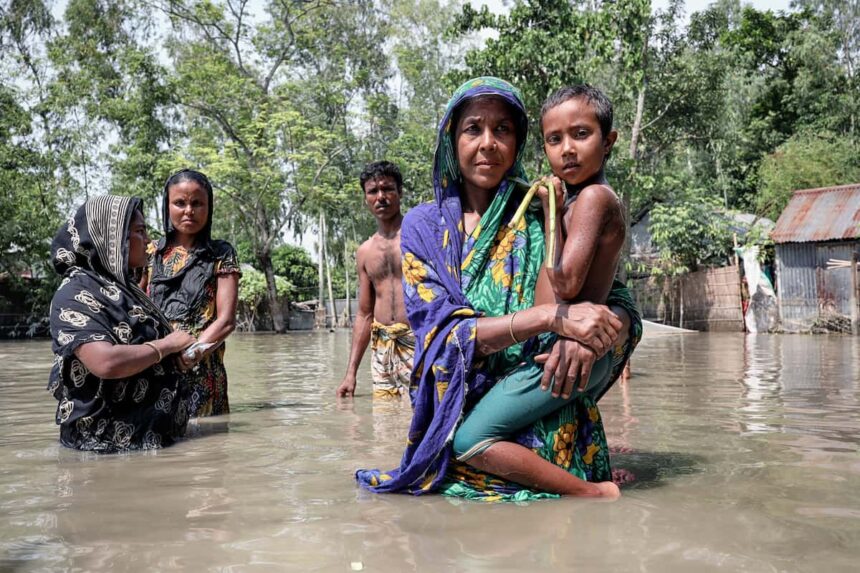As Russian diplomats stormed out of the main assembly hall, slamming doors behind them, the carefully orchestrated atmosphere of the Global Climate Finance Summit briefly descended into chaos. This wasn’t the only tension disrupting what organizers had hoped would be a turning point for international climate cooperation.
“We’re trying to build consensus while the house is literally burning,” said Amara Okonjo, Nigeria’s climate envoy, wiping sweat from her brow in the sweltering Berlin conference center. Outside, protesters marched through streets baking under unprecedented June temperatures, demanding action beyond promises.
The summit, bringing together 143 nations alongside major development banks and private financiers, faces its stiffest challenge yet: securing trillions in climate finance while navigating increasingly fractured geopolitics. With the United States signaling potential withdrawal from climate commitments following November’s election, delegates struggle to maintain momentum in what many call our “critical decade” for climate action.
I’ve spent three days navigating the labyrinthine negotiations, where technical discussions about green bonds and climate-resilient infrastructure repeatedly collapse into fundamental questions about responsibility and power. The atmosphere shifts between determined cooperation and barely disguised panic.
“What we’re witnessing is a recalibration of climate finance architecture under extraordinary pressure,” explains Dr. Helena Reyes of the Climate Policy Institute, who shared data showing current finance flows remain 70% below what’s needed to meet Paris Agreement targets. “The gap isn’t just about numbers—it reflects deep structural problems in how we organize global cooperation.”
The summit’s core tension revolves around the $100 billion annual climate finance promise made by wealthy nations to developing countries—a target repeatedly missed since its 2009 inception. According to OECD monitoring, actual transfers hover around $83 billion, with dispute over what qualifies as climate finance further complicating matters.
“They count everything—loans, export credits, even some fossil fuel projects rebranded as ‘transition assistance,'” said Bolivian delegate Miguel Sánchez, who chairs the G77+China negotiating bloc. “Meanwhile, vulnerable communities see nearly nothing. This isn’t finance—it’s accounting tricks.”
The summit’s ambitious agenda includes establishing new financing mechanisms for loss and damage compensation, scaling up adaptation funding, and creating incentives for private sector investment in green transitions. Yet progress remains elusive across all fronts.
European negotiators, led by Germany’s climate minister Luisa Neubauer, have proposed doubling climate finance commitments to $200 billion annually by 2030, but with conditions requiring recipient countries to phase out fossil fuel subsidies. This proposal has met fierce resistance from oil-producing nations and those dependent on coal for energy security.
“You cannot ask countries facing energy poverty to sacrifice development while wealthy nations still subsidize their own fossil industries,” argued Saudi climate negotiator Abdullah Al-Jasser in a heated plenary session. His sentiment found unexpected allies among developing nations otherwise supportive of climate action.
The World Bank’s delegation, led by newly appointed climate chief Maya Robertson, unveiled a strategy to leverage $50 billion in new climate investment through reformed lending practices and risk guarantees. But civil society observers remained skeptical.
“We’ve heard these ambitious numbers before,” said Thomas Mkandawire from the Pan-African Climate Justice Alliance. “What communities need isn’t financial engineering but direct access to resources that build resilience against storms, droughts, and rising seas already devastating our regions.”
The summit’s most contentious discussions surround U.S. climate policy uncertainty. With polls showing former President Trump performing strongly ahead of November elections, and his repeated promises to abandon climate commitments, many nations have begun formulating contingency plans.
“We’re entering uncharted territory where the world’s largest historical emitter might abdicate responsibility entirely,” said China’s special climate envoy Li Wei, whose delegation has signaled willingness to increase climate investments throughout Asia and Africa regardless of American participation.
I spoke with several American state governors and business leaders attending as unofficial representatives, who expressed determination to maintain climate progress through non-federal channels. “Washington doesn’t speak for all of America on climate,” California Governor Gabriela Mendez told me. “Our coalition of states represents 65% of U.S. GDP and we’re moving forward with or without federal support.”
The emerging “climate finance architecture 2.0” appears increasingly fragmented yet potentially more resilient, with regional development banks, sovereign wealth funds, and institutional investors taking more prominent roles.
“When major powers retreat, new coalitions form,” observed former UN Secretary-General António Guterres, attending as a special advisor. “The challenge isn’t just replacing U.S. dollars but reimagining a system that has consistently underdelivered for those most vulnerable.”
Yesterday’s announcement that the Africa-led Climate Investment Platform had secured $17 billion in commitments from pension funds and sovereign wealth funds represented one of the summit’s few concrete achievements.
“We’re done waiting for salvation from the Global North,” declared Kenyan President Kaluyu in announcing the initiative. “Africa holds 40% of global renewable energy potential. This isn’t charity—it’s the investment opportunity of the century.”
As negotiations enter their final day, delegates appear increasingly divided between those fighting for incremental improvements to existing frameworks and others calling for wholesale reimagining of climate finance.
“The system isn’t broken—it was built this way,” asserted Marshallese delegate Kathy Jetnil-Kijiner, whose low-lying Pacific nation faces existential threat from rising seas. “True progress requires acknowledging that climate finance isn’t aid but restitution for damages largely caused by wealthy economies.”
Whether the summit produces meaningful outcomes remains uncertain. But what’s clear from my conversations across delegation offices, protest encampments, and late-night strategy sessions is that climate finance has transcended technical policy to become a central battleground for global justice.
And despite political headwinds, the financial sector’s growing recognition of climate risk as business risk provides reason for cautious optimism. As BlackRock CEO Laurence Fink told assembled finance ministers: “Politics follows markets, not the reverse. And markets have decisively moved toward decarbonization regardless of any election outcome.”
For communities on climate’s frontlines, however, such financial logic offers little immediate comfort. As summit delegates debate mechanism design and accounting methodologies, the gap between promised finance and experienced reality grows ever wider.






